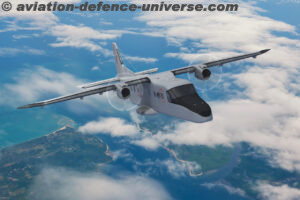- The aero engine eco system in India : identifying and overcoming barriers
 Insighteon Consulting ran an interactive war-game from 23 to 25 August 2022, with the aim of ascertaining a roadmap for the development of an aero engine eco system in India.
Insighteon Consulting ran an interactive war-game from 23 to 25 August 2022, with the aim of ascertaining a roadmap for the development of an aero engine eco system in India.
The analysts included retired DRDO senior scientists, leaders from the Public Sector like ISRO, HAL, NAL, GTRE, and Private Industry like Godrej Aerospace, Paninian India and Bharat Forge, academia, retired defence officers, bureaucrats, diplomats and members of various think tanks.
The key takeaways from the war-game are listed below.
- Developing indigenous aero engines is a strategic necessity. Within the military the rising demand and diversity of applications for aero engines due to the increasing usage of UAVs and low cost cruise missiles make future strategic concerns even more dire. With export restrictions placed by foreign governments on engines of UAVs/ missiles and components thereof, India has no option but to develop its own aero engines as well as establish resilient supply chains for the products. By not indigenising aero engines, India runs a huge risk of compromising national security.
- The governments’ Make in India initiative has helped the defence ministry save more than Rs 1 lakh crore foreign exchange outflow in last 5 years. Indigenised gas turbine engines will help the defence ministry save INR 3 lakh crore in 20 years, vastly contributing to the Make in India initiative.
- India will be spending more of its defence budget on UAVs and low cost cruise missiles, which will complement more and more activities in military operations, and it was brought out by the analysts that it appears that the importance of the aero engine requirement is underestimated.
- The small engine market for next 20 years is estimated to be INR 61,000 Crore
- Research, Development and Demonstration from Academic institutions, National laboratories and Indian Private industries is not well supported due to a trust deficit and non-existence of conducive policies for involving them.
- The aero engine R&D remains a monopoly of the public sector.
- The aero-engine development playing field is not level for the current qualified and globally certified private sector players as well as in-house academia
- Co-development models with foreign players will not result in a new design or a modification/upgrade capability. The country must continue its efforts to develop indigenous engines in mission mode.
- As a first step, India needs to put restrictions on itself on import of small aero engines and add it to the “positive list of indigenisation”.
- The Kaveri is future ready as a Dry aero-engine without afterburner thrust factor. It is ideal for the anticipated requirement of Unmanned Fighter aircrafts besides the RPSA , the Ghatak and other 3 to 8 ton platforms.
- Lack of testing infrastructure caused a delay of 6 years in the Kaveri engine development.
- ADE/NAL should be encouraged to release RFQs for smaller engines to private entities also in addition to GTRE/HAL.
- DcPP model could be rethought by making it a consortia of a DRDO lab, private sector, academia and even the user.
- The SPV Model is suitable for development of the 110kN engine.
- The recommended route for development of small engines should be a 1 plus 2 model ie. a GTRE/HAL and two private sector companies.
- Self-certification by design department of developmental agencies and self-inspection by QA/QC departments of manufacturing agencies may be instituted for non-critical and semi-critical parts/components.
- Engine development institutions should increase their interaction with
- A new module titled National Commission for Aero Engine Development (NCAED) was suggested.The analysts recommended that design and development as well as production should come under one head at the top level, to have a seamless coordinated development programme which allows cross pollination of technologies and prevents duplication of effort. While each discipline needs to be handled by a specialist group, the integration of the deliverables of each of these disciplines into a power plant needs a management structure which can provide the synergy effect.


























































































































